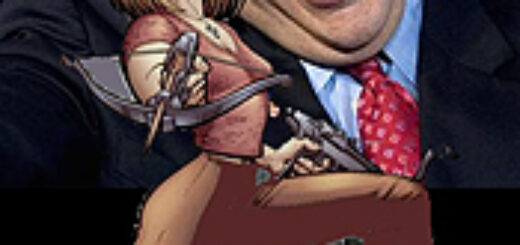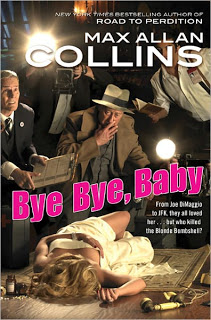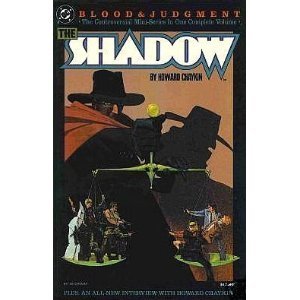The Parent/Child Divide in Films
We admit it, we here at ComicMix love the work of Paul Giamatti. He inhabits his characters and makes them unique and memorable, from John Adams to Harvey Pekar. It’s one reason we’re looking forward to next week’s release of [[[Win Win]]] on Blu-ray and DVD. It prompted the folks over at 20th Century Home Entertainment to send us the top films prior to this one that explores the divide between parent and child, one of the most universal themes in literature, plays, and film.
For those unfamiliar with Win Win, here’s the official word: It’s a sad state of affairs when a parent / child relationship is strained and the one Kyle (Alex Shaffer) has with his mother is no exception. This void that he needs filled is discovered by the Flaherty family consisting of Mike (Paul Giamatti), Jackie (Amy Ryan) and little Abby (Clare Foley).
Many other movies focus on this theme, and our feature will highlight some of the best that handle this difficult subject with aplomb including: White Oleander, Thirteen and What’s Eating Gilbert Grape.
White Oleander (2002)
White Oleander portrays a teenager who journeys through a series of foster homes after her mother goes to prison for committing a crime of passion. Astrid, played by Alison Lohman, is the teenager who throughout nearly a decade experiences forbidden love, religion, near-death experiences, drugs, starvation, and how it feels to be loved. During these years, she keeps in touch with her mother via letters to prison. The film has a strong female cast which also includes Michelle Pfeiffer and Renne Zellweger.
Thirteen (2003)
Tracy (Evan Rachel Wood) is a normal 13-year-old girl who is also a straight-A student. After befriending a new girl at school, Evie (Nikki Reed), Tracy’s world is turned upside down. Evie introduces her to a world of sex, drugs, cash and petty crime. Tracy’s whole identity rapidly changes and it isn’t long before her new world and attitude finally takes a toll on her, her family, and old friends. Due to her new persona, the relationships between Tracy and the people that care for her most are pushed to the limit.
What’s Eating Gilbert Grape (1993)
This film boasts an all-star cast of before-they-were-superstars, including Leonardo DiCaprio, Johnny Depp and Juliette Lewis. The story follows Gilbert (Depp) who has to care for his younger brother Arnie (Di Caprio) and his obese mother, which gets in the way when love walks into his life in the form of Becky (Lewis).
Win Win (2011)
Academy Award® Nominee Paul Giamatti stars as a lovable yet long-suffering lawyer and high-school wrestling coach who takes us on a brilliantly heartfelt journey through the game of life…where you can’t lose ’em all. When Mike Flaherty (Giamatti) comes across a teenage runaway who also happens to be a champion wrestler, Mike’s luck turns around in spectacular fashion. But his win-win situation soon becomes more complicated than he ever imagined when the boy’s family affairs come into play. Co-starring Oscar® Nominee Amy Ryan and directed by Oscar® Nominee Tom McCarthy, this touching and funny comedy will leave you cheering.
Which films would you add to this list?













 I’m back, my gentle compatriots, with another webcomic for you to feast upon! I know what all of you are saying though, as you sit with arms folded in protest– ”But Marc, you’ve brought to us a rising list of the sick and macabre! Each new webcomic (be it still active, or dead, or with a glorious hard cover archive hitting shelves) has sunk to new depths of depravity. Have you found another gloriously funny webcomic, or are you simply reaching for the rafters in a pathetic attempt to appease us, your loyal and ravenous fanbase!?”
I’m back, my gentle compatriots, with another webcomic for you to feast upon! I know what all of you are saying though, as you sit with arms folded in protest– ”But Marc, you’ve brought to us a rising list of the sick and macabre! Each new webcomic (be it still active, or dead, or with a glorious hard cover archive hitting shelves) has sunk to new depths of depravity. Have you found another gloriously funny webcomic, or are you simply reaching for the rafters in a pathetic attempt to appease us, your loyal and ravenous fanbase!?” I beg of you, gentle ComicMix readers… take a journey with me back in time. Step one? Dust off a pair of “wide leg” jeans. Don your favorite pair of Airwalk low-tops. Grow your hair out a little, and put a Pearl Jam Compact Disk into your brand new Diskman. Step Two? Power up your personal computer. You know the one, with that brand new Intel Pentium chip the kids all talk about. Fire up that 14.4 Baud Modem, and hop on that newfangled ‘Information Super-Highway’. Welcome to 1993 folks! Now that you’re here, you should check out a little known webcomic called
I beg of you, gentle ComicMix readers… take a journey with me back in time. Step one? Dust off a pair of “wide leg” jeans. Don your favorite pair of Airwalk low-tops. Grow your hair out a little, and put a Pearl Jam Compact Disk into your brand new Diskman. Step Two? Power up your personal computer. You know the one, with that brand new Intel Pentium chip the kids all talk about. Fire up that 14.4 Baud Modem, and hop on that newfangled ‘Information Super-Highway’. Welcome to 1993 folks! Now that you’re here, you should check out a little known webcomic called 
 The Oregonian
The Oregonian "It was very bad news today," Chamberlain said. "The most important thing is that he gets over the pneumonia, but he’s had a very severe head injury." Chamberlain and Wilson have known each other for four decades but have been together for only the last eight years.
"It was very bad news today," Chamberlain said. "The most important thing is that he gets over the pneumonia, but he’s had a very severe head injury." Chamberlain and Wilson have known each other for four decades but have been together for only the last eight years.








